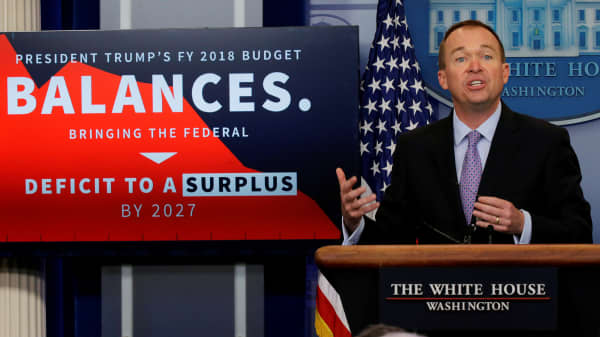Donald Trump's proposed budget only works if the United States hits — and maintains — 3 percent growth. But simple economics may get in the way.
"The foundation for the plan is 3 percent growth. In fact, that is Trumponomics," budget director Mick Mulvaney told the House Budget Committee on Wednesday.
Trump's agenda includes balancing the federal budget, but without that relatively rosy growth number, Mulvaney said, the government won't collect enough in tax revenue to make its numbers work.
"I have news for you, both parties: If we do not get to 3 percent growth, it is unlikely we will ever balance the budget again," he said.



